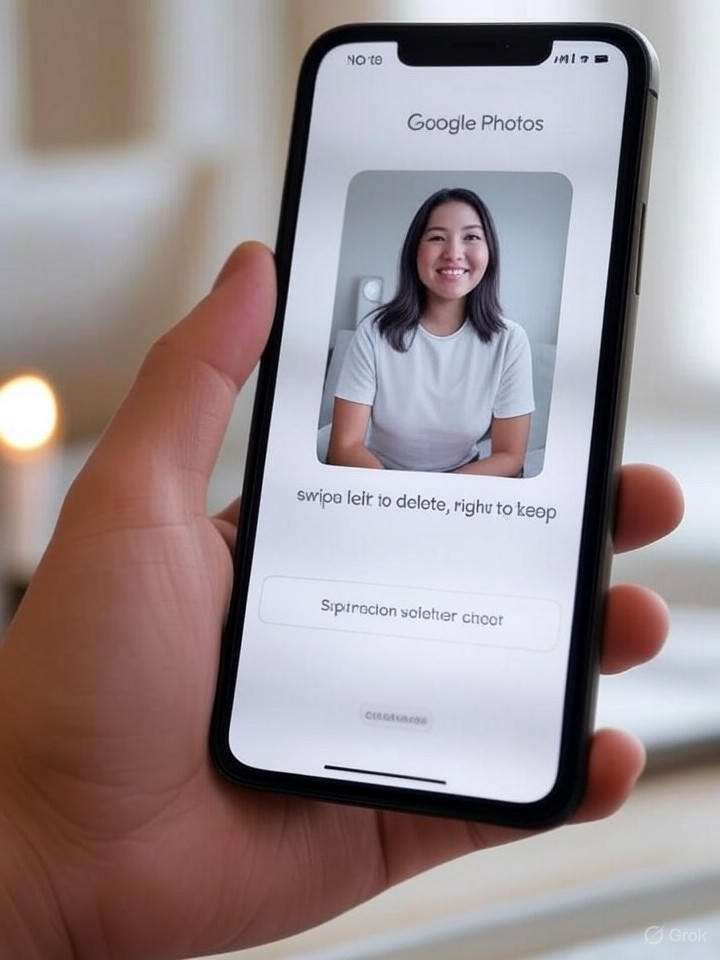Google is experimenting with a novel way to help users manage their overflowing photo libraries, borrowing a page from the playbook of dating apps. In a move that blends consumer tech innovation with familiar mobile gestures, the company’s Photos app is testing a feature that lets users swipe left or right on images to decide their fate—much like approving or rejecting potential matches on Tinder. This isn’t about romance, of course, but about efficiently culling blurry shots, duplicates, and space-hogging files from one’s digital collection.
Early reports indicate the feature surfaces in the app’s storage management section, presenting users with a stack of photos flagged as potential deletions. Swiping right might keep an image, while left discards it, streamlining what can be a tedious chore. According to a recent article from Android Authority, some users have already spotted this Tinder-style interface, which targets blurry images and large files to free up cloud storage without the hassle of manual selection.
The Swipe Mechanic’s Roots and Implementation
The inspiration draws directly from Tinder’s core interaction model, where users swipe to express interest or disinterest. Tinder, as detailed in its Wikipedia entry, popularized this double opt-in system since its 2012 launch, turning quick gestures into a cultural phenomenon. Google appears to be adapting this for productivity, potentially using AI to pre-sort photos that are low-quality or redundant, then letting human intuition take over via swipes.
Insiders note that this isn’t Google’s first flirtation with gesture-based tools; the company has long integrated machine learning in Photos for features like automatic enhancements and search. But this swipe mechanic could mark a shift toward more interactive, gamified maintenance, encouraging users to engage more frequently with their libraries. A report from Gadgets 360 highlights how the feature is still in testing, appearing sporadically for select users, suggesting a phased rollout to gauge feedback.
Implications for User Experience and Privacy
For everyday users, this could transform photo management from a dreaded task into something almost fun, akin to scrolling through social feeds. Industry analysts see it as Google’s response to growing storage pressures, especially with Photos’ free tier limitations pushing more toward paid plans. By making deletion intuitive, it might reduce abandonment rates and boost retention, as cluttered libraries often lead to app fatigue.
On the privacy front, questions arise about how Google identifies “deletable” photos—does it scan content more deeply? While the company emphasizes on-device processing for many AI features, this swipe tool could inadvertently reveal more about user habits. As Forbes reported, the feature has popped up for more users recently, sparking discussions on whether it enhances control or subtly nudges behaviors aligned with Google’s ecosystem.
Competitive Edge in Photo Management
This development positions Google Photos amid fierce competition from apps like Apple’s Photos and third-party tools such as Slidebox, which has offered Tinder-like swiping for photo organization since 2016, per a TechCrunch piece. Google’s version, however, benefits from integration with its vast AI capabilities, potentially outpacing rivals by combining swipes with smart suggestions.
Looking ahead, if rolled out widely, it could influence other apps to adopt similar mechanics, blurring lines between entertainment and utility in mobile design. For tech insiders, this underscores Google’s strategy to humanize AI-driven tasks, making complex data management feel effortless. Early adopters, as noted in Phonandroid, appreciate the novelty, though broader success will depend on balancing simplicity with user trust.
Potential Challenges and Future Iterations
Challenges include ensuring the feature doesn’t accidentally prompt deletions of cherished memories—false positives in AI flagging could erode confidence. Google might refine this with user overrides or customizable criteria, drawing lessons from past updates like the app’s Map View, introduced in 2020 according to TalkAndroid.
Ultimately, this Tinder-inspired tool reflects a broader trend in tech: repurposing social gestures for practical ends. As Google iterates, it could redefine how we interact with our digital pasts, one swipe at a time, while keeping the company at the forefront of intuitive app experiences.




 WebProNews is an iEntry Publication
WebProNews is an iEntry Publication